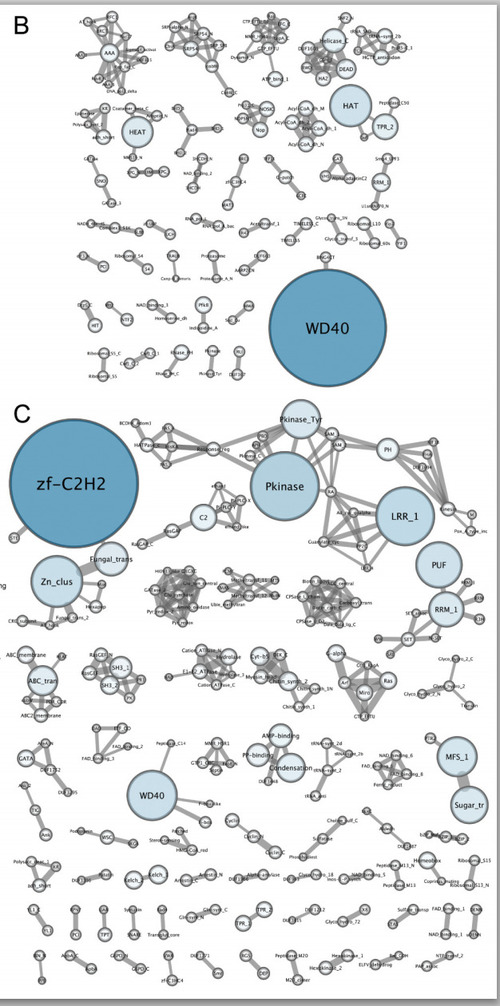Fungal genes in context: genome architecture reflects regulatory complexity and function
See on Scoop.it – Virology and Bioinformatics from Virology.ca
Gene context determines gene expression, with local chromosomal environment most influential. Comparative genomic analysis is often limited in scope to conserved or divergent gene and protein families, and fungi are well suited to this approach with low functional redundancy and relatively streamlined genomes. We show here that one aspect of gene context, the amount of potential upstream regulatory sequence maintained through evolution, is highly predictive of both molecular function and biological process in diverse fungi. Orthologues with large upstream intergenic regions are strongly enriched in information processing functions, such as signal transduction and sequence specific DNA binding, and, in the genus Aspergillus, include the majority of experimentally studied, high-level developmental and metabolic transcriptional regulators. Many uncharacterised genes are also present in this class and, by implication, may be of similar importance
See on gbe.oxfordjournals.org
